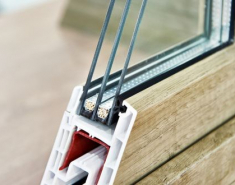Why Replace Windows And Doors In Winter?
Checking your windows for signs of damage:
Check the caulking around the window
Broken or missing caulking will allow water and the wind to penetrate the walls and cause moisture damage and rotting over time. Caulking acts as the first line of defense against water penetration into the wall structure.
Look for signs of worn weatherstripping
In slider and hung windows, weatherstripping is a crucial element in preventing drafts and heat loss. As the window gets older, the weatherstripping wears out and deteriorates. Most weatherstripping today is peel and stick, and you can replace it yourself.
Check your window for sealed unit failure
A chipped or cracked glass pane may seem like a visual nuisance, but the problem may be much bigger than meets the eye. If your glass panes are put together in a sealed unit, there is a good chance there may be a gas fill between the glass panes to improve the window’s efficiency. If the glass pane is cracked, the seal in the window may be broken causing the gas to leak and your home to lose heat. It is often possible to change just the sealed unit in the window without having to replace the whole window.
Monitor air humidity in your home
Because warm air contains more moisture than cold air, it is common for windows to form condensation on the glass. If left to stand this condensation can cause mold growth on windows or be absorbed into wood window components, eventually leading to rotting. Some people resort to buying dehumidifiers for their homes, but lowering the thermostat a couple of degrees or simply ventilating the room can reduce the levels of humidity significantly.
Source: https://bit.ly/3a3wUs7









